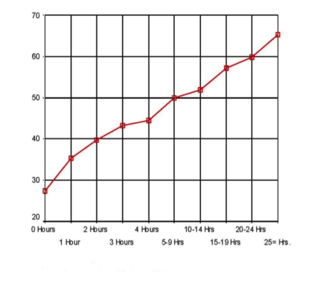In a prior blog titled, “What To Do With A Denied VA Application – Part 1" I discussed what you should consider when a VA application is denied and the merit of pursuing an appeal despite the time it can take to prevail. Today’s blog will describe the appeal process as initiated by the Notice of Disagreement (NOD), the formal way to submit a claimant’s disagreement with a VA determination. While a Notice of Disagreement can be drafted in the form of a letter or on a 21-4138, “Statement in Support of a Claim,” there is an official VA 21-0958, “Notice of Disagreement” form that was introduced in 2013. The latest 2015 version of this form can be found at the VA Forms web page http://www.va.gov/vaforms/.
 As of March 24, 2015, this form is required to appeal a Service Connected Disability claim, but it is not required to appeal a Non-Service Connected Disability claim. The terms of the form suggest that it is geared more towards service-connected disability claims; however, it can be used for non-service-connected disability claims as well.
As of March 24, 2015, this form is required to appeal a Service Connected Disability claim, but it is not required to appeal a Non-Service Connected Disability claim. The terms of the form suggest that it is geared more towards service-connected disability claims; however, it can be used for non-service-connected disability claims as well.
Once you have timely filed the NOD, which is within one year from the date on the initial decision letter, the VA will respond with a letter requesting that you select what form of the appeal process you prefer. There are 2 forms of the appeal process at this stage: the Post Decision Review Process and the Traditional Appeal process. You must make this election within 60 days from the date on this letter or your appeal will default to the Traditional Appeal process. The Post Decision Review Process involves the assignment of a Decision Review Officer (DRO) at your regional VA office who will completely review the claims folder as well as any information from the authorized representative. The Traditional appeal process is a review by a VA staff member at the pension management center. In either case, more information may be requested. The Post Decision Review Process is the preferred appeals method as it make be quicker than the Traditional Appeal Process and relies on the greater expertise and experience of the Decision Review Officer to identify adjudication errors.
Regardless of which appeals process you elect, the next step would receiving either an approval or, if not approved, a Statement of the Case (SOC). The SOC is an often, lengthy statement summarizing the VA’s decision and the evidence on which the decision was based as well as providing relevant legal citations. To continue the appeal after receiving the SOC, you must file VA form 9, “Appeal to Board of Veterans’ Appeals” within 60 days from the date of the Statement of the Case. At this level you have the option of requesting a hearing before the BVA, although this will easily extend the processing of your appeal beyond 3 years to 5, or even 7, years depending on the form of hearing.
The appeal process is not difficult in terms of what you need to fill out and when you need to file it. The difficulty lies in managing a process where long periods of time are spent waiting for a response from the VA, punctuated by whirlwinds of activity when you must request and receive information and documentation from your client to draft and submit a response to the VA within a short period of time, regardless of what else may already be on your desk. That is why it is important that your client inform you of any correspondence that they may receive in case you do not receive a copy and that deadlines are scheduled in your firm management system so that they are not missed. Such precautions are the only way to increase the likelihood that your appeals will succeed.
If you want to learn more about Veteran Benefits Planning for you estate and elder law practice, join us June 1st – 3rd for our Practice With Purpose Program. It will teach you not just all you need to know about VA Benefits, but also Asset Protection Planning and Medicaid Planning!
If You Practice in Today's Estate Planning Environment, You Won't Want to Miss This!
By Sabrina A. Scott, Paralegal, The Elder & Disability Law Firm of Victoria L. Collier, PC and Production Coordinator for Lawyers for Wartime Veterans, LLC.
Victoria L. Collier, Veteran of the United States Air Force, 1989-1995 and United States Army Reserves, 2001-2004. Victoria is a Certified Elder Law Attorney through the National Elder Law Foundation, Chair, National Academy of Elder Law Attorney’s VA Task Force, Author of 47 Secret Veterans Benefits for Seniors, Author of Paying for Long Term Care: Financial Help for Wartime Veterans: The VA Aid & Attendance Benefit, Founder of The Elder & Disability Law Firm of Victoria L. Collier, PC, Co-Founder of Lawyers With Purpose, LLC.










